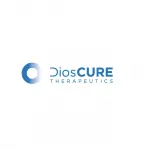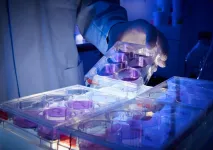Fossils' soft tissues helping to solve puzzle that vexed Darwin
2021-01-12
(Press-News.org) Remarkably well-preserved fossils are helping scientists unravel a mystery about the origins of early animals that puzzled Charles Darwin.
Analysis of the 547 million-year-old remains has enabled researchers to trace the ancestry of some of the world's earliest animals further back than ever before.
Their study has uncovered the first known link between animals that evolved during the so-called Cambrian Explosion some 540 million-years-ago and one of their early ancestors.
Until recently, little was known about the origins of animals that evolved during the Cambrian event because of a lack of well-preserved fossil evidence.
The mysterious origins of animals that evolved at this time - when the diversity of life on Earth increased rapidly, giving rise to almost all modern-day animal groups - baffled 19th century naturalist Charles Darwin. It is often referred to as Darwin's dilemma.
Prior to the new study, it had proven difficult to trace links with earlier animals because their soft tissues - which provide vital clues about the animals' ancestry - almost always break down over time.
During fieldwork in Namibia, scientists from the University of Edinburgh unearthed the fossil remains of tiny animals - known as Namacalathus - that resemble a pin cushion attached to a short stalk.
Using an x-ray imaging technique, the team found some of the animals' soft tissues immaculately preserved inside the fossils by a metallic mineral called pyrite. Until now, scientists had only ever identified skeletal remains of Namacalathus.
Studying the soft tissues - and comparing them with those in animals that evolved later - revealed that Namacalathus was an early ancestor of species that appeared during the Cambrian Explosion. Among them are types of prehistoric worms and molluscs.
The study, published in the journal Science Advances, was funded by the Natural Environment Research Council. The work also involved a researcher from Lomonosov Moscow State University, Russia.
Professor Rachel Wood, of the University of Edinburgh's School of GeoSciences, said: "These are exceptional fossils, which give us a glimpse into the biological affinity of some of the oldest animals.
"They help us trace the roots of the Cambrian Explosion and the origin of modern animal groups. Such preservation opens up many new avenues of research into the history of life which was previously not possible."
INFORMATION:
[Attachments] See images for this press release:

ELSE PRESS RELEASES FROM THIS DATE:
2021-01-12
Core technology includes promising bivalent single-domain antibodies simultaneously targeting two surface structures of the viral spike protein.
Lead candidates DIOS-202 and DIOS-203 are engineered for high potency and their potential to avoid the emergence of escape mutants.
DIOS-202 and DIOS-203 entered into accelerated development to initiate clinical studies later this year.
BONN, Germany, January 12, 2021 - DiosCURE SE announced a publication in Science describing its core technology of multivalent single-chain antibodies with a unique molecular mode-of-action to inactivate ...
2021-01-12
While most people are able to eat a normal diet, many of those managing distinct nutritional requirements related to a disease or health condition rely on medical foods. Medical foods help patients meet their nutritional needs, often improving nutritional and health outcomes and quality of life. A recent publication in Current Developments in Nutrition, titled "Medical Foods: Science, Regulation, and Practical Aspects. Summary of a Workshop," shares the historical and regulatory context of medical foods and perspectives on their role in the future.
Medical foods help patients manage their nutritional needs, yet it can be very difficult for patients to have access to them. In August 2019, the Healthcare Nutrition Council (HNC), in partnership with the American Society ...
2021-01-12
What is the endgame for SARS-CoV-2, the virus that is causing worldwide devastation? If it becomes endemic -- circulating in the general population -- and most people are exposed in childhood, SARS-CoV-2 may join the ranks of mild cold-causing coronaviruses that currently circulate in humans, according to a model developed by Emory and Penn State scientists.
The model, published January 12 in Science, draws upon studies of the four common cold coronaviruses and SARS-CoV-1. For those viruses, the term "herd immunity" is incomplete and possibly misleading, says ...
2021-01-12
Antibodies are an important weapon in the immune system's defense against infections. They bind to the surface structures of bacteria or viruses and prevent their replication. One strategy in the fight against disease is therefore to produce effective antibodies in large quantities and inject them into the patients. The outgoing US President Donald Trump probably owes his rapid recovery to this method. However, the antibodies used to treat him have a complex structure, do not penetrate very deeply into the tissue and may cause unwanted complications. Moreover, producing antibodies is difficult and time-consuming. They are therefore probably not suitable for widespread use.
Mass production in yeast or bacteria
"We focus on another group of molecules, the nanobodies," ...
2021-01-12
Researchers at Karolinska Institutet in Sweden have developed, in collaboration with researchers in Germany and the U.S., new small antibodies, also known as nanobodies, which prevent the SARS-CoV-2 coronavirus from entering human cells. The research study, published in Science, shows that a combined nanobody had a particularly good effect - even if the virus mutated. According to the researchers, the nanobodies have the potential to be developed into a treatment for COVID-19.
Specific proteins, spike proteins, on the surface of the SARS-CoV-2 coronavirus help the virus infect host cells. Therefore, antibodies that block the spike proteins and prevent them from binding to the cell can be a way to stop infection.
From the perspective ...
2021-01-12
What will the SARS-CoV-2 outbreak look like ten years from now as it passes from pandemic to endemic, maintained at a constant baseline level in populations without being fueled by outside infections? Data from four endemic human coronaviruses, which circulate globally and cause only mild symptoms, may hold some answers, say Jennie Lavine and colleagues. Their analysis of the immunological and epidemiological data for these viruses helped them develop a model to predict the trajectory of SARS-CoV-2 as it becomes endemic. Most importantly, the authors say, their model incorporates distinct components of immunological protection--susceptibility to reinfection, weakening of the disease after reinfection, and transmissibility of the virus after reinfection--that each wane differently. Lavine ...
2021-01-12
An immunization strategy tested in mice protects against infection from SARS-CoV-2, as well as from potentially emerging animal coronaviruses, researchers say. The approach could be "used as described or easily adapted" to provide defense against newly discovered zoonotic coronaviruses. In the last 20 years, three betacoronaviruses have caused devastating disease in humans. The global pandemic caused by the latest such virus, SARS-CoV-2, highlights the need to protect against other strains that could present a threat to humans, possibly through a pan-coronavirus vaccine. To support related efforts, ...
2021-01-12
Thanks to major progress in the understanding and management of rare congenital diseases and syndromes, many patients with these rare disorders are now living longer lives. With this progress it has become apparent that many non-skeletal rare diseases have an impact on bone mass, bone quality and/or bone metabolism, with potentially severe repercussions for quality of life in adults.
The new paper 'Bone fragility in patients affected by congenital diseases non skeletal in origin', published in Orphanet Journal of Rare Diseases by the International Osteoporosis Foundation (IOF) Skeletal Rare Diseases Working Group (SRDWG), provides ...
2021-01-12
Most people experience turbulence primarily from the experience of flying in an airplane. However, turbulence is a key feature of nature and is found everywhere, from rivers to galaxies.
Turbulent-like dynamics are difficult to capture in a still image. However, Leonardo da Vinci did everything possible to identify the underlying order of the phenomenon, which he observed in eddy currents forming randomly in water. In fact, he was fascinated by trying to understand and describe the generating principles governing such complicated dynamics. This is so much ...
2021-01-12
Scientists are combining artificial intelligence and advanced computer technology with biological know how to identify insects with supernatural speed. This opens up new possibilities for describing unknown species and for tracking the life of insects across space and time
Insects are the most diverse group of animals on Earth and only a small fraction of these have been found and formally described. In fact, there are so many species that discovering all of them in the near future is unlikely.
This enormous diversity among insects also means that they have very different life histories and roles in the ecosystems.
For ...
LAST 30 PRESS RELEASES:
[Press-News.org] Fossils' soft tissues helping to solve puzzle that vexed Darwin





